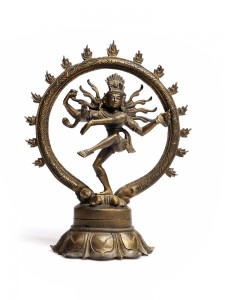Located just below the logo at the top of this page is the quote "the press ... just doesn't get religion." This is the mantra of GetReligion, a website dedicated to critiquing religion reporting in the secular media. (Independent and denominational religion publications such as my own Church of England Newspaper fall outside our remit.)
The articles on this website examine religion "ghosts" in stories -- when questions of faith, belief or religious identity animate an issue but are neglected in the article. Other GetReligion stories laud reporters or newspapers for providing context, insight or understanding of the faith issues at play. We also point out errors, false assumptions and omissions found in the in coverage of the familiar as well as the exotic.
Many answer the question "why" these mistakes are made by reference to the banishment of religion from education and the public square. But a lack of understanding of the faith is not solely a function of secularization. One need only turn to the India -- a country steeped in religion -- to see this.
Asian News International (ANI) -- an Indian wire service -- ran a story last week with the somewhat bald headline "Man attacks church in Mangalore." It reported:
In a freak incident, a man broke into the St. Alphonsa Church in Mangalore and damaged an idol of Jesus Christ on Thursday. The man has been identified as Shiva, a resident of Jalligudde. It was learnt that he went into the priest's private chambers, removed his clothes and tried to wear the holy vestments, before he was discovered by a couple of students staying at a hostel attached to the church. He damaged the main idol of Christ and the Holy Cross placed inside the church. He also broke both the arms of the idol.
 The lede in DNA -- an English-language daily broadsheet published in Bombay -- opened with the damage also. "Drunk youngster damages church in Bangalore" (Some problem here with the headline. Bangalore is the capital of Karnataka and 250 km northwest of Mangalore, Karnataka's main seaport).
The lede in DNA -- an English-language daily broadsheet published in Bombay -- opened with the damage also. "Drunk youngster damages church in Bangalore" (Some problem here with the headline. Bangalore is the capital of Karnataka and 250 km northwest of Mangalore, Karnataka's main seaport).
Church attack returned to haunt Mangalore on Thursday night when an unemployed man, in an inebriated state, vandalised St Alphonsa Church near Kankanady Market in the south Karnataka city. In the third such incident in a fortnight, Shiva Bajal, 24, damaged the grottoes of Jesus and Mary. He also damaged the furniture in the main hall of the church and tried desecrating the altar. Further damage to the church was prevented when a group of people from the parish apprehended Bajal. The inebriated man continued his rampage and also tried to assault Shibbi, a priest.
The Daijiworld television network broadcast a report on the attack showing the wrecked church. (The report starts about 40 seconds after the video begins -- following the commercial). The Hindu -- one of India's oldest (1878) and largest circulation (1.5 million) English-language newspapers -- also highlighted the damage:
Between 8.30 p.m. and 9 p.m., a man entered the church, attacked the statue of Jesus with a candle stand, and went to the sacristy where he inflicted more damage. The man, since identified as Shiva, broke an idol of Jesus and threw a copy of the Bible on the floor. He threw the monstrance (a golden-coloured article about a foot in height which is used for the Adoration), and a stole that is used in a number of sacraments, Assistant Parish Priest Shibbi Puthiyara said.
But unlike the other reports, it gave some context to the attack for the non-Christian reader. It interviewed one of the parishioners who witnessed the attack, and quoted her as saying:
“The monstrance is so sacred that it is held only with the stole.” ... “The man damaged the statue of Jesus, the monstrance, and the stole. All three are considered sacred,” she said.
All of these reports highlight the religious issues involved and treat seriously the concerns and anger of the congregation. However, the language used in the ANI article, for example, is incorrect. While I know a few hard-shell Protestants who would argue the Roman Catholic Church's use of statues in their churches is "idolatry", the statue of Jesus is not an "idol" in the sense that an Indian reader would understand the word.
 Nor is the priority given by the Indian reports to the damaged statue or liturgical vestments over the destroyed monstrance correct. This can best be illustrated by comparing the press statement put out by the local Catholic bishop and the newspaper reports. On 5 Nov 2011 Bishop Aloysius Paul D’Souza of Mangalore wrote:
Nor is the priority given by the Indian reports to the damaged statue or liturgical vestments over the destroyed monstrance correct. This can best be illustrated by comparing the press statement put out by the local Catholic bishop and the newspaper reports. On 5 Nov 2011 Bishop Aloysius Paul D’Souza of Mangalore wrote:
The Catholic Church dedicated to St Alphonsa in Kankanady was attacked by a miscreant on Thursday November 3 night. The holy monstrance was desecrated and statues of Jesus were damaged.
The monstrance was "desecrated" and the statues "damaged," the bishop reported. Why the difference? Two words: Real Presence.
For the Roman Catholic the Eucharistic elements, or gifts, are transformed at the moment of consecration into the Body and Blood of Christ -- not only spiritually transformed but substantially transformed, retaining only the the appearance or accidents of bread and wine. They are the Body and Blood of Christ. The elements in the monstrance were damaged and thereby desecrated or profaned. This doctrinal detail is missing from the Indian accounts save for The Hindu.
Turning the glass the other way round, while a Western reader might bristle at the idol reference would he catch the symbolism of the name of the attacker: Shiva? In the Hindu pantheon Shiva is the destroyer.
Some may recognize this through a quotation from the Bhagavad Gita made famous by J. Robert Oppenheimer. Upon witnessing the world's first nuclear explosion in 1945, Oppenheimer -- the director of the Manhattan Project -- said the experience brought the epic Hindu poem to mind.
"Now I am become Death [Shiva], the destroyer of worlds," Oppenheimer said citing Chapter 11 verse 32 of the Bhagavad Gita when seeing the destructive power of an atomic blast.
For an Indian audience, the irony of a man names Shiva destroying things would be obvious. For a Western audience calling a statue of Jesus an idol is thoughtless or a deliberately provocative statement -- both have meanings bellow the surface.
A good reporter is one who informs his readers without being didactic and who is able to catch the nuances in a story to give it shape and context. I wish there were more of them.
Image of the monstrance and of Shiva via Shutterstock.
